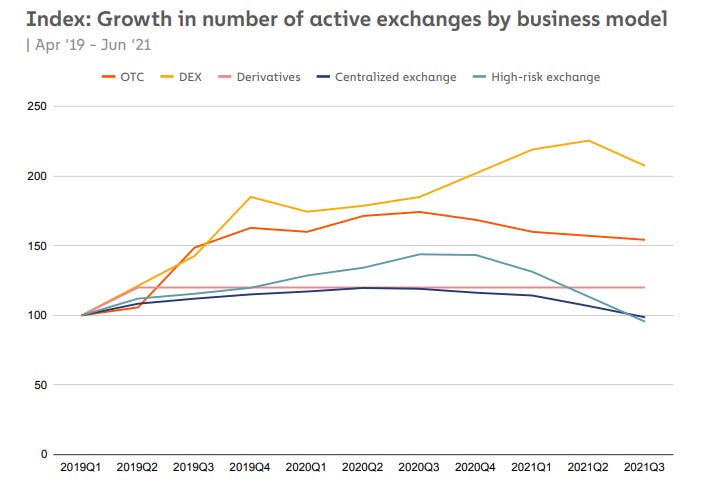DEX vs. CEX: Which one is for you?
Market Meditations | November 12, 2021

?DEX vs. CEX
Decentralized finance has gained traction very rapidly since the beginning of the year.
Decentralized exchanges (DEXs) like Uniswap, dYdX and PancakeSwap tout some impressive trading volume and total value locked (TVL).
But how do these up-and-comers stack up against centralized exchanges (CEXs) like Binance?
- According to a report published last month, the TVL in DEXs rose from $20 billion to $80 billion this year alone – an increase of 400%.
- Attractive features like yield farming and liquidity pool rewards, coupled with the advantages of decentralized control, are responsible for DEXs outpacing CEX growth between Q1 2019 and Q3 2021.
- Most decentralized exchanges are permissionless, bringing buyers and sellers together to trade without intermediaries.
These key advantages are undoubtedly driving factors in the breakneck pace of DeFi’s expansion. But considering exchanges like FTX and Binance still reign supreme, there must be some counterpoints to the decentralized side of the story.
- Centralized exchanges typically offer higher degrees of reliability and security, with some offering recovery assistance, when possible, in the event of erroneously sent funds.
- Most CEX fees on networks like Bitcoin and Ethereum are far lower than the gas fees paid on decentralized exchanges.
- While DEXs face liquidity problems from time to time, large, centralized exchanges rarely, if ever, experience this problem.
Regardless of which route you take; volume and interest is up on exchanges – centralized and decentralized alike. We can see from the meteoric rise of DEXs that the health of DeFi’s growth is strong.


